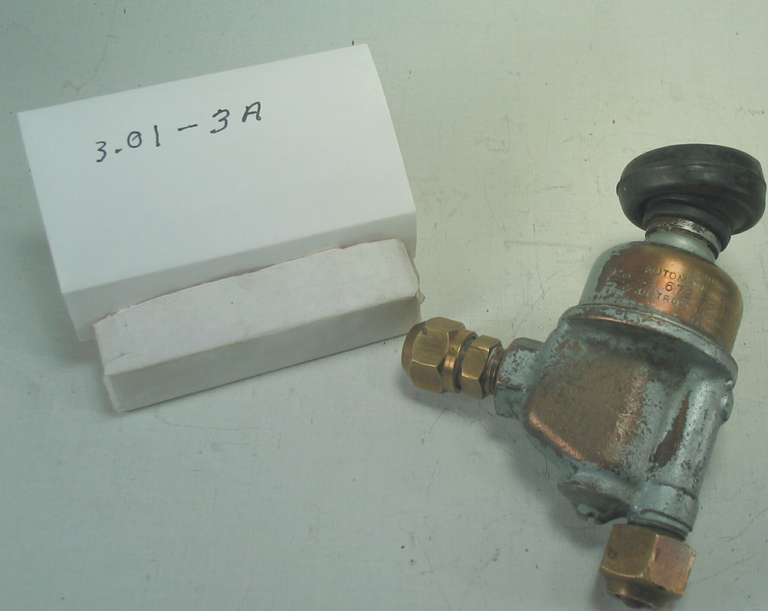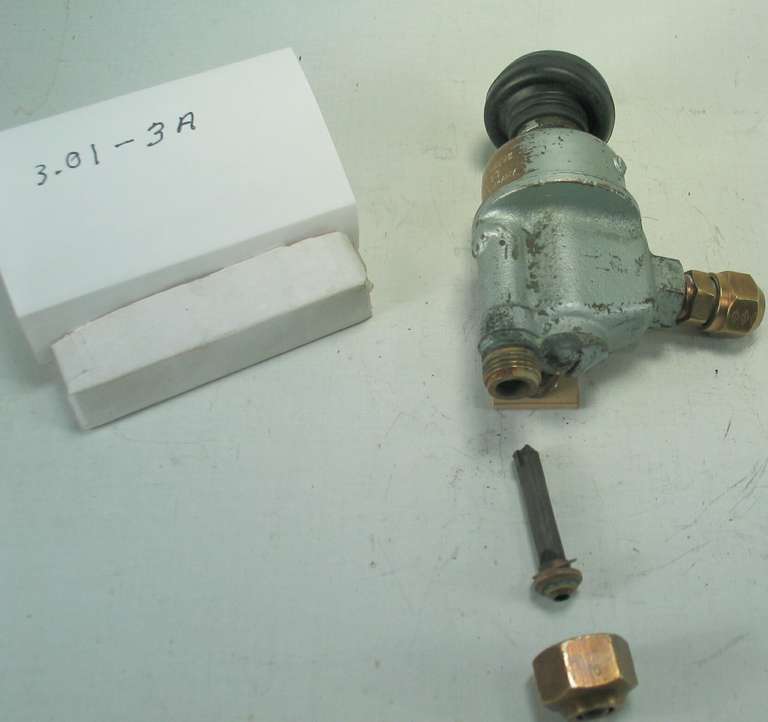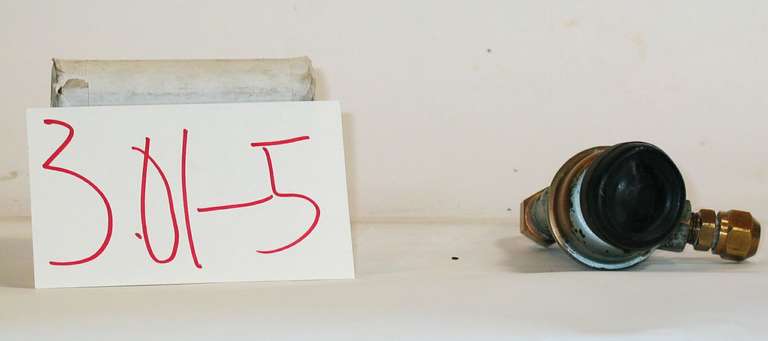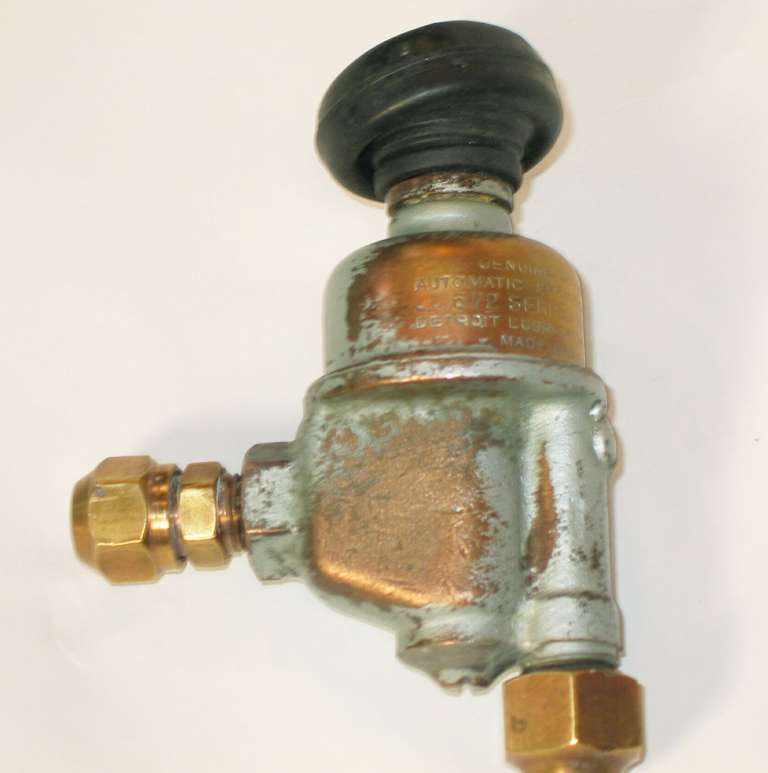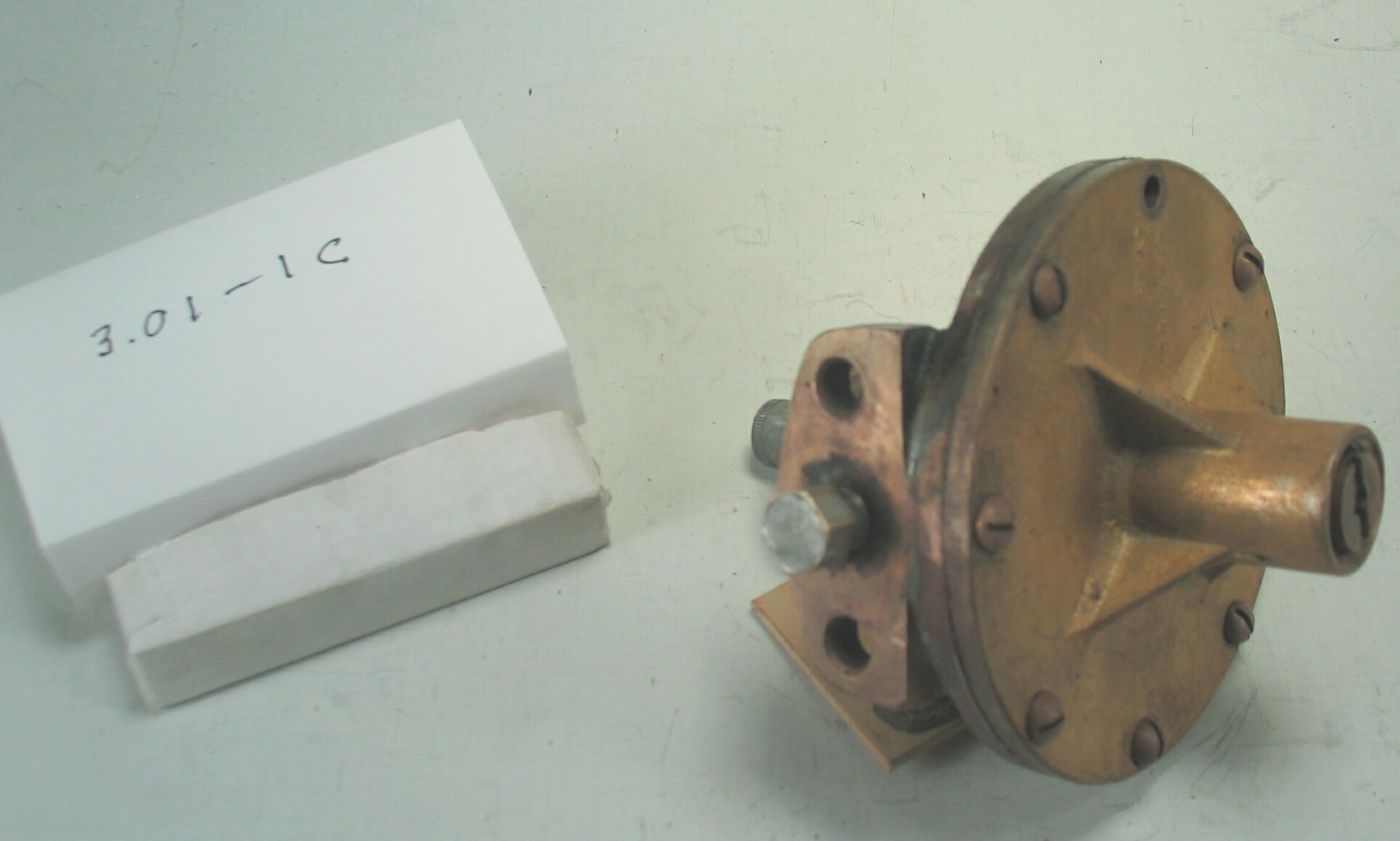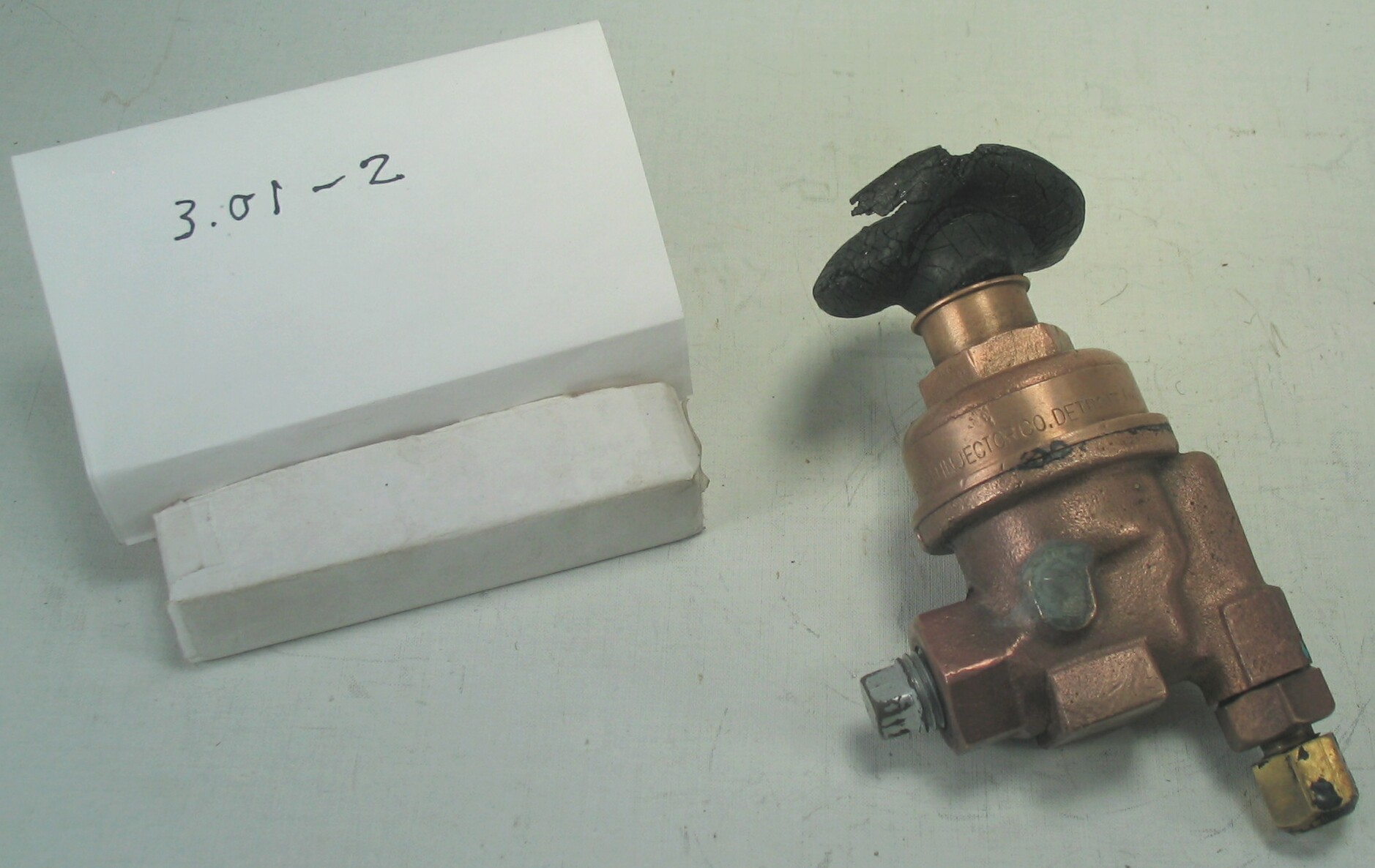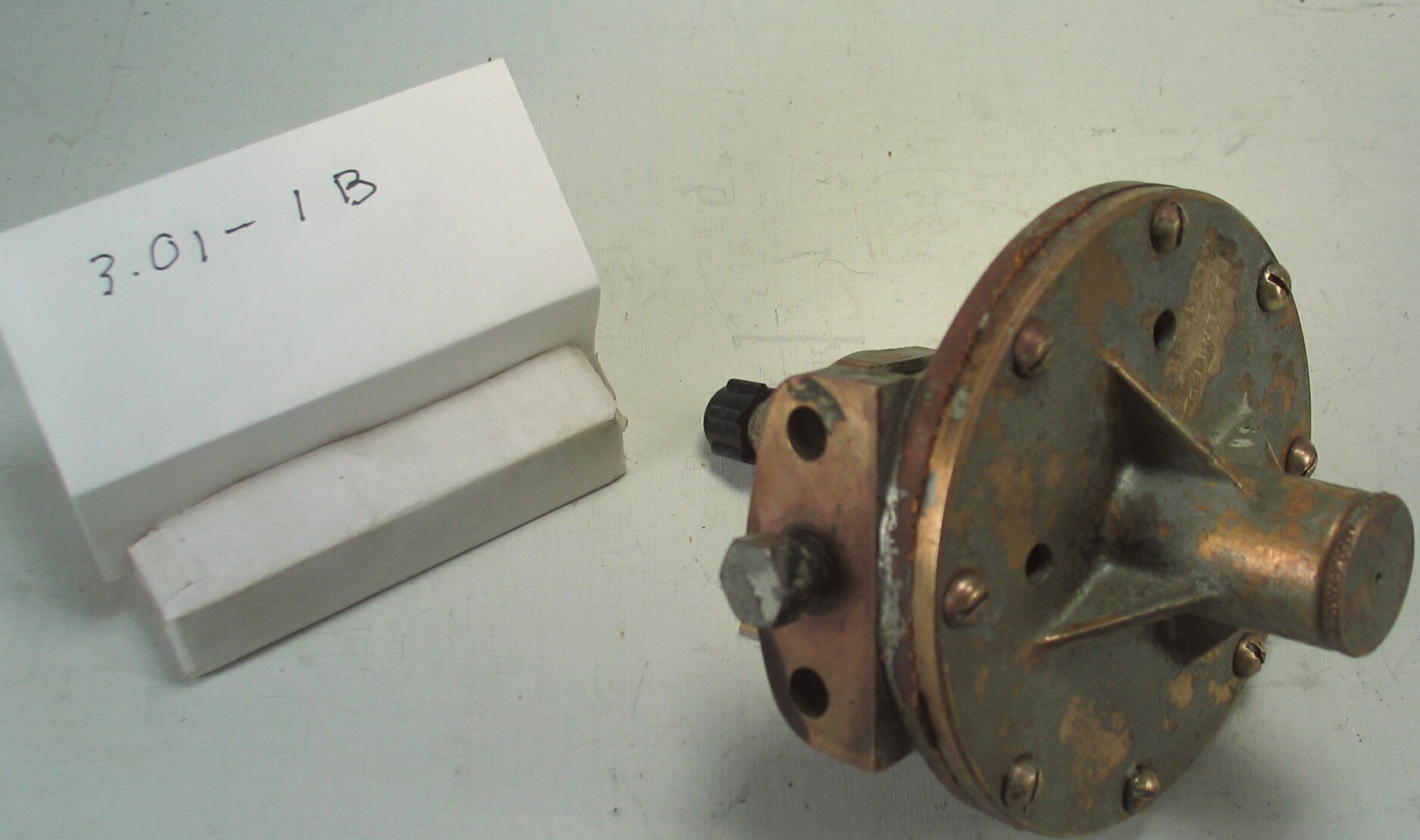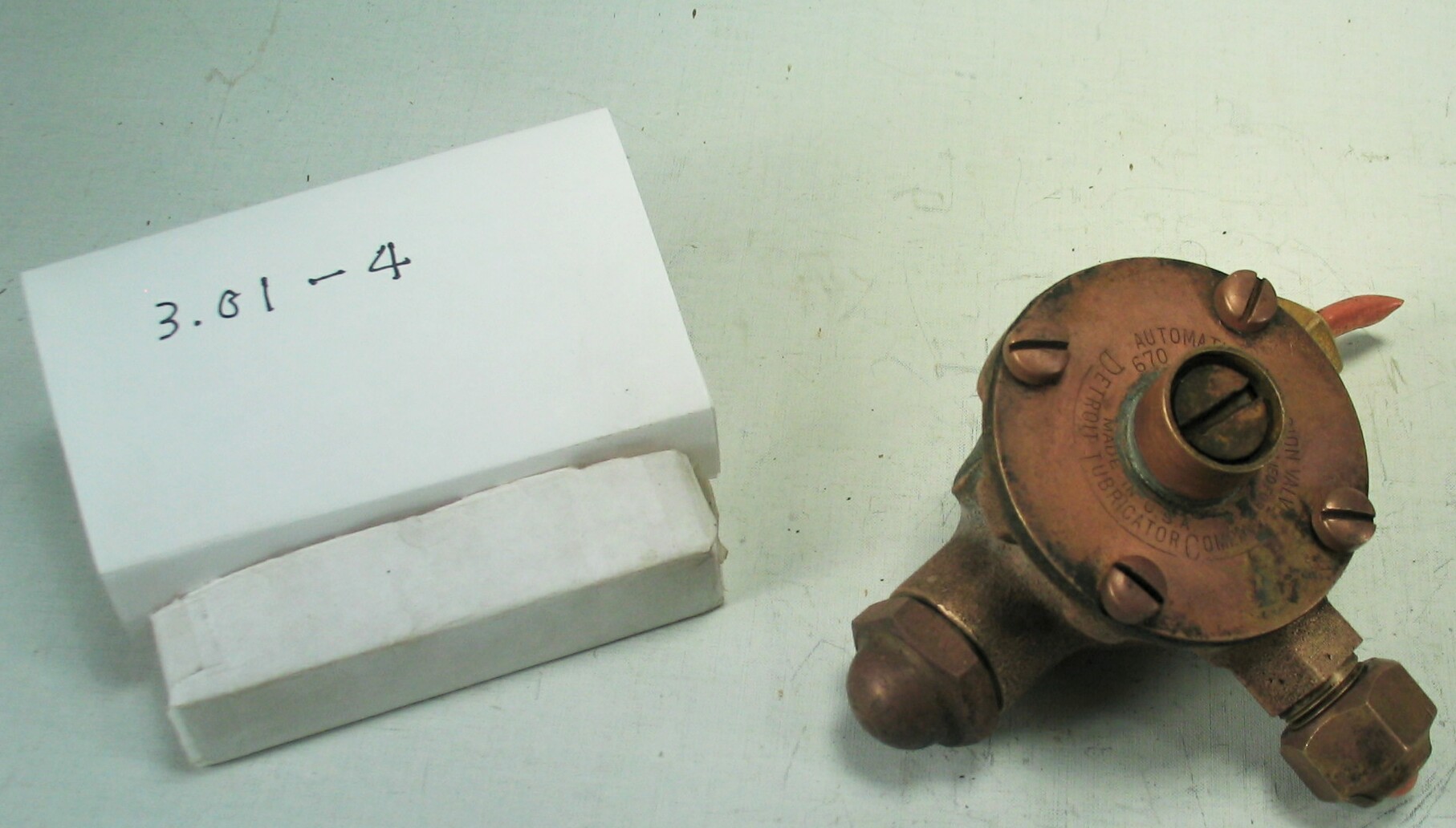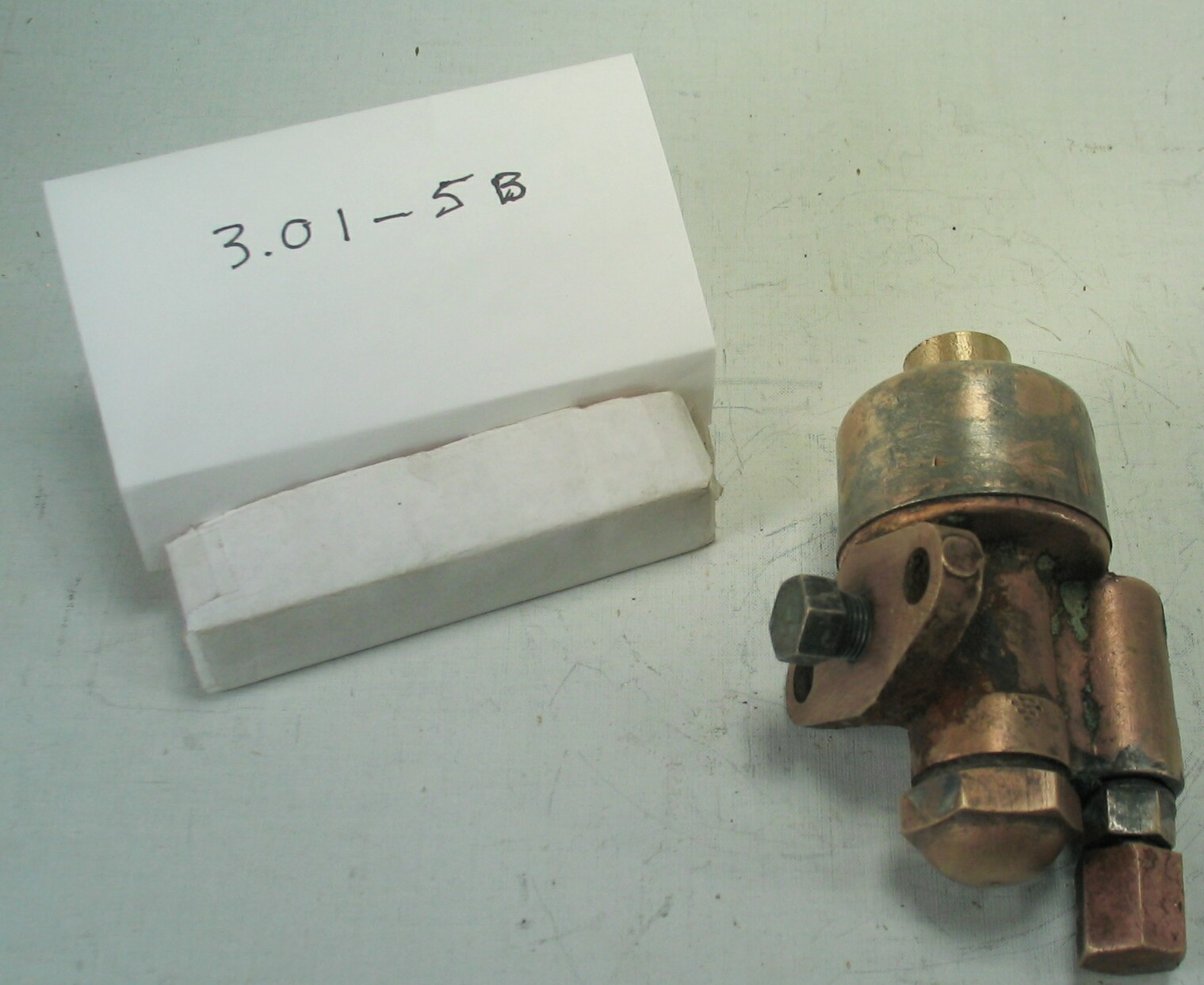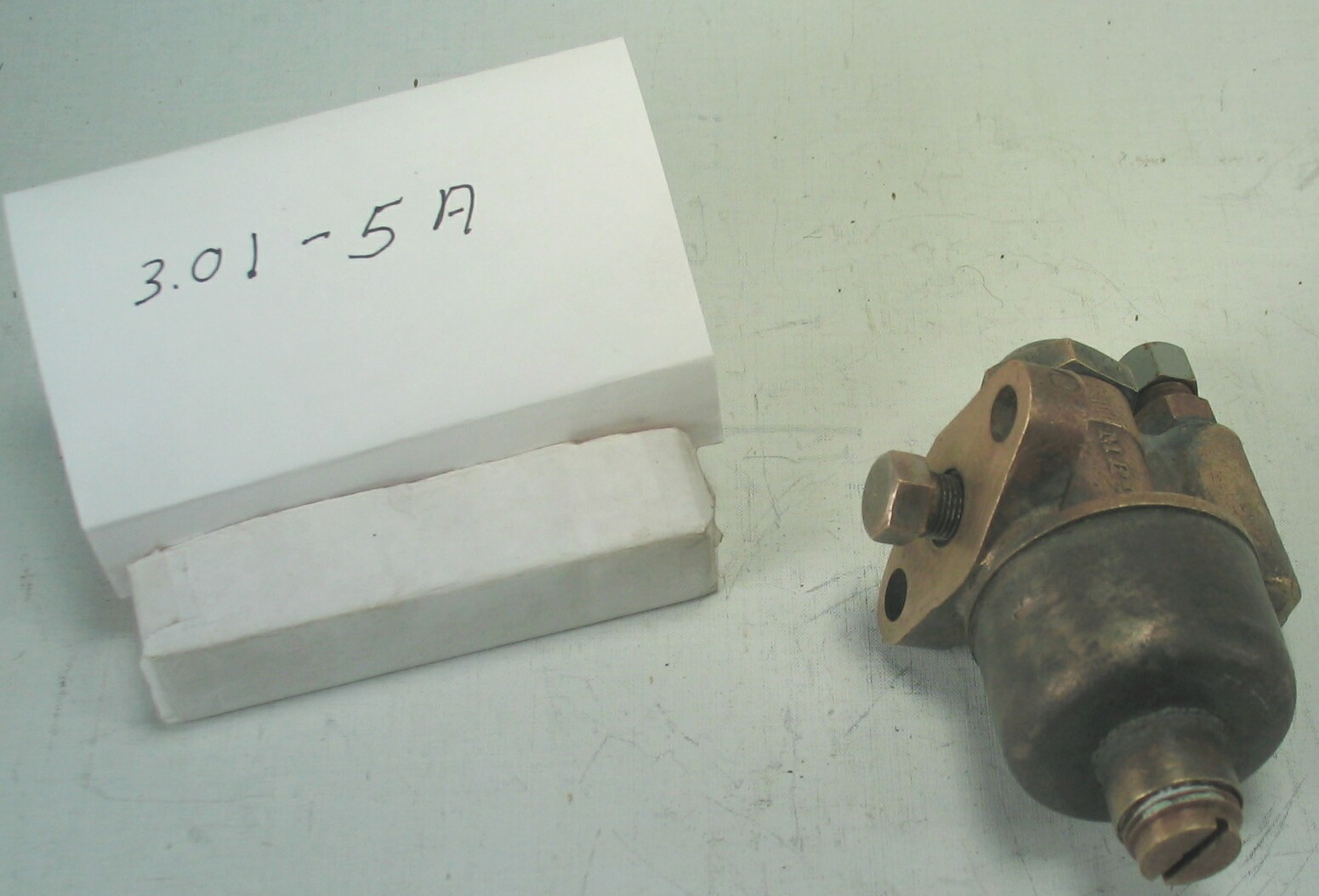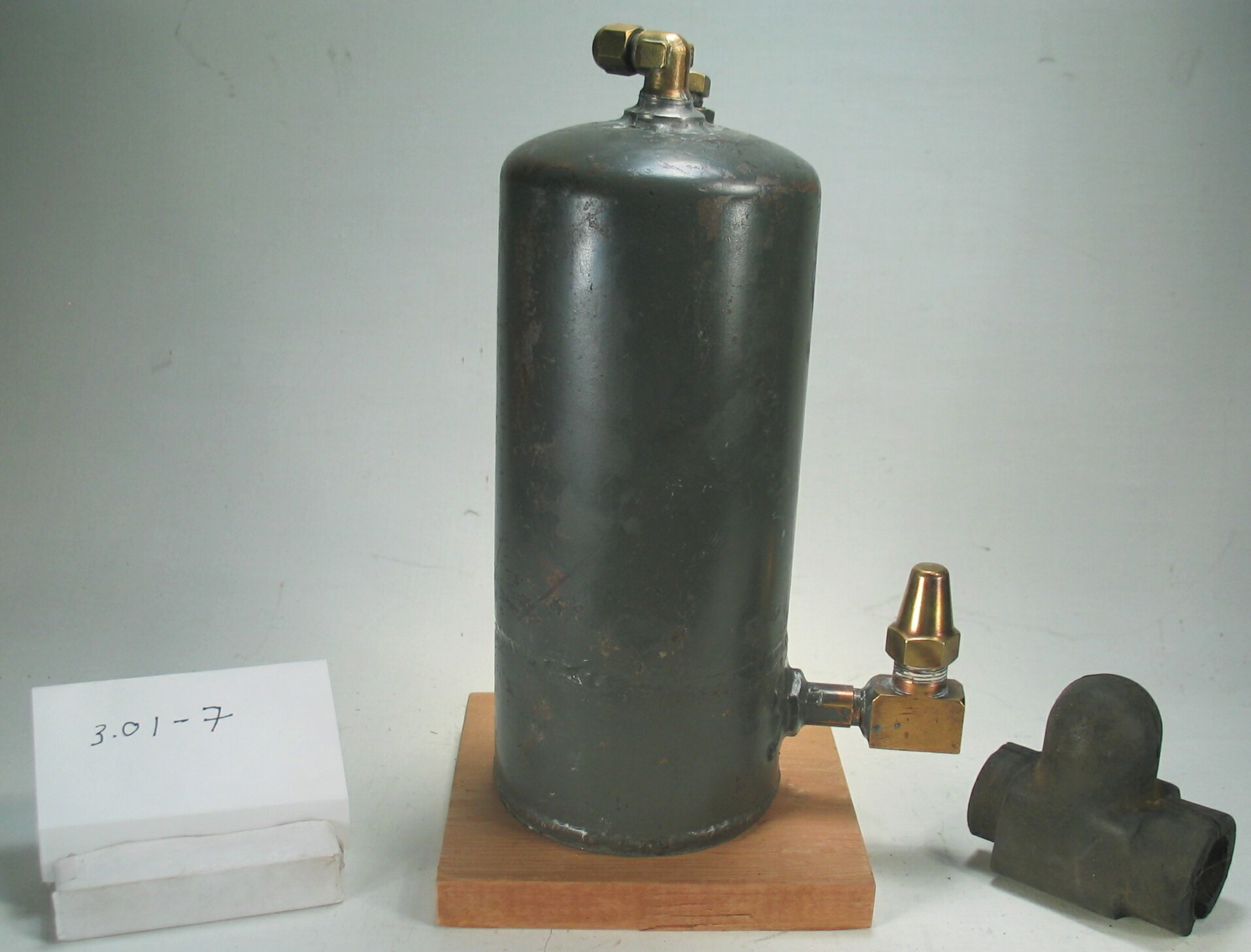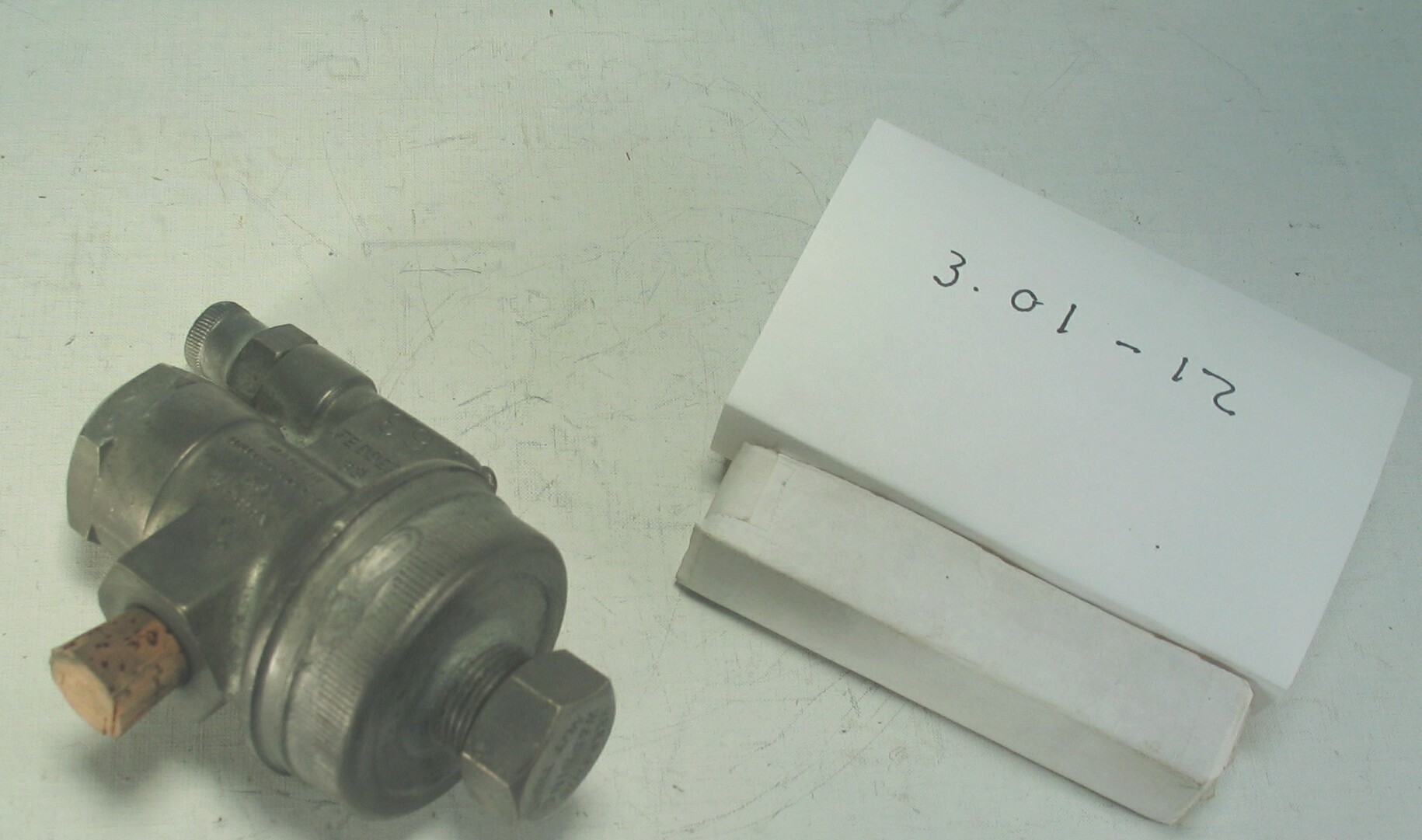3.01-3A: Detroit Lubricator 1935 Second Generation Expansion Valve
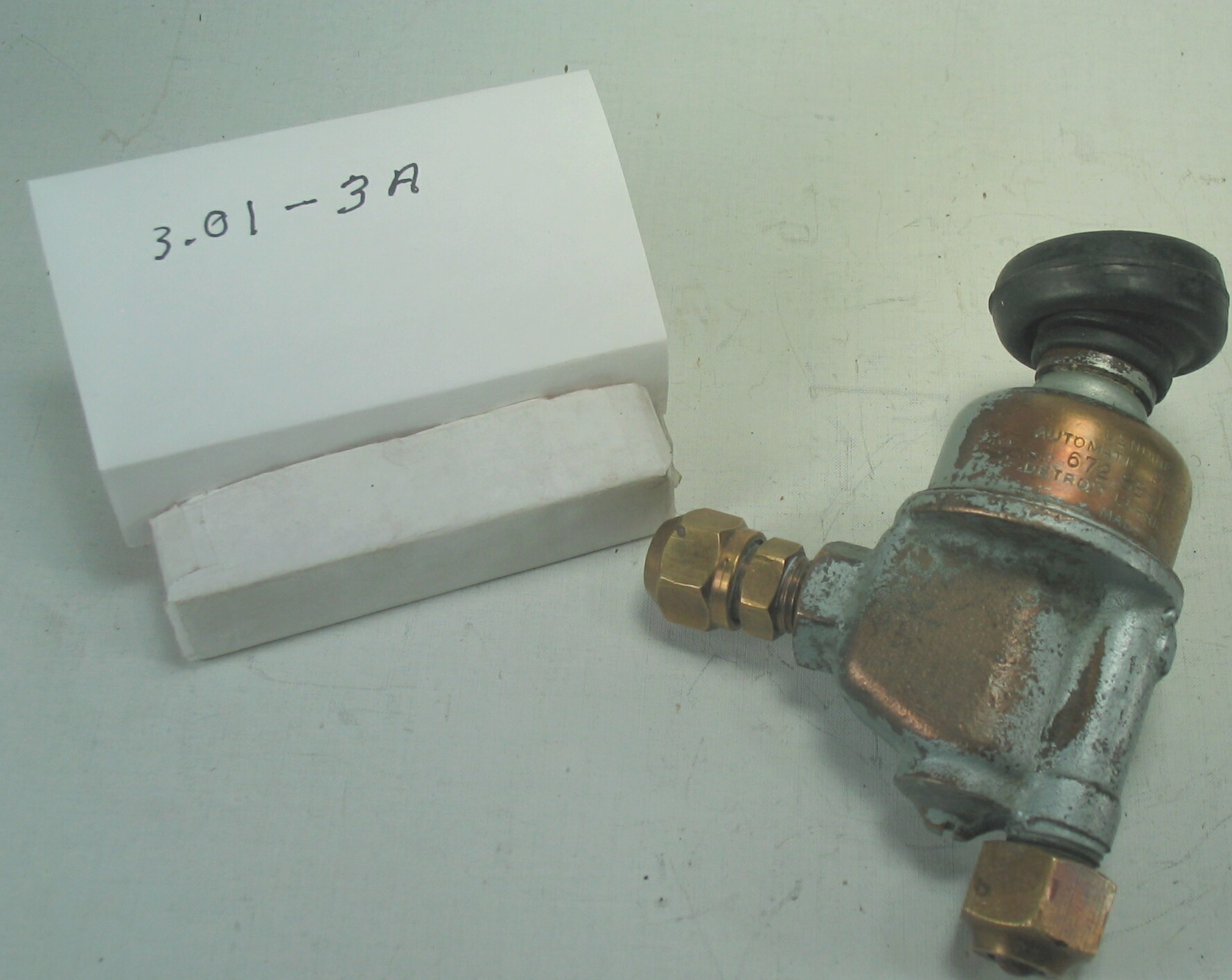
| HHCC Accession No. 2006.045 | HHCC Classification Code: 3.01-3A |
|---|
Description:
An early, second generation, compact, spring compensated, adjustable, automatic expansion valve for use on ‘dry evaporators made by arguably the leader in the technology of the period, Detroit Lubricator, with cast brass body and aluminium overcoat, built-in inlet filter screen, original moisture protection cap in natural rubber, engineered for sulphur dioxide refrigerant, Model 672, Detroit Lubricator, circa 1935.
Group:
3.01 Refrigerant Flow Controls - Household
Make:
Detroit Lubricator
Manufacturer:
Detroit Lubricator Co., Detroit
Model:
672, Series 10C33
Serial No.:
Size:
4 x 2 x 5 in. h
Weight:
14 oz.
Circa:
1935
Rating:
Exhibit, education, and research quality, illustrating the engineering design, construction, and operating principles, of second generation, automatic expansion valves employed for the metering refrigerant flow into cooling units in mechanically cooled household and small commercial refrigeration applications in Canada.
Patent Date/Number:
Provenance:
From York County (York Region) Ontario, once a rich agricultural hinterlands, attracting early settlement in the last years of the 18th century. Located on the north slopes of the Oak Ridges Moraine, within 20 miles of Toronto, the County would also attract early ex-urban development, to be come a wealthy market place for the emerging household and consumer technologies of the early and mid 20th century.
Original service repair tag in the hand writing of Howard Oliver ‘TienKamp, Kettleby, floods’ [The reference is to an early settlement family, farming in the rural area just west of Aurora, near the village of Kettleby. This was ‘rebellion Country’, associated with the 1836 uprising in Upper Canada. The reference to flooding indicates a mal-
functioning valve allowing excessive amounts of liquid refrigerant to flood into the evaporator cooling coil, The valve was used on farm, milk can cooler in the Tienkamp dairy barn. Milk coolers of the period [See reference 1] where in constant need of adjustment, service, and repair and were dependent on refrigeration mechanics such as Howard Oliver to keep them running. In hot summer weather milk would sour quickly, leaving the farmer with a major economic loss, if the milk cooler failed for more than a few hours]
This artifact was discovered in the 1950’s in the used stock of T. H. Oliver, Refrigeration and Electric Sales and Service, Aurora, Ontario, an early worker in the field of agricultural, industrial and consumer technology.
Type and Design:
Automatic spring compensated Pressure actuated
Construction:
Cast brass body Aluminium overcoat on brass Body [a dispersion of aluminium particles was popularly used as a paint to cover brass and copper fitments used in refrigerated spaces, as a safeguard against food contamination]
Material:
Special Features:
Adjustment screw capped with original moisture protecting cap in natural rubber. Rubber is preserved in original condition, unusual for the 1930’s, where rubbers deteriorated quickly, especially in contact with oil. The caps were needed to protect the valve-adjusting stem from condensation water dripping of the coiling unit. Condensation would typically re-freeze along the adjustment screw, causing the valve to loose its calibrated setting.
Removable liquid line inlet screen
Accessories:
Capacities:
Performance Characteristics:
Operation:
Control and Regulation:
Targeted Market Segment:
Consumer Acceptance:
Merchandising:
Market Price:
Technological Significance:
An example of the new generation of compact, more precisely engineered and performing expansion valves emerging early in the 1930’s, used to maintain cooling units [evaporators], in mechanically cooled refrigerators, at the desired refrigerant pressure. Dramatises the major gains made by the industry over a period of less than 5 years, during a period of feverish research and development using the scant knowledge and experience available to workers in the field at the time, compare ID # 165 to 168
- This artifact of history tells the many stories of early adoption of this particular fluid flow technology, the automatic expansion valve. After a brief flurry of excitement over the use of more costly and delicate float operated devices, as a more efficient means of flow control, industry engineers would return to the automatic expansion valve in the early 30’s. But by then the automatic expansion valve would be a smaller and much more precisely calibrated and efficient device. While the automatic expansion valve was less efficient in its effective use of evaporator surface than high and low side float systems [See HHCC Series 3.01 artifacts, ID # 175 and 176 for example], it had the advantage of reliability, maintainability and affordability, as well as serviceability.
Industrial Significance:
The engineering sophistication and advancements in manufacturing, assembly and materials utilization, represented here, in contrast to ID # 165-168 stands as a remarkable industry achievement.
Socio-economic Significance:
Socio-cultural Significance:
The socio-cultural significance of the impact of the unobtrusive, automatic expansion valve on life in Canada, throughout the early part of the 20th century, would be hard to over-estimate. It would become the quintessential, automated refrigerant flow regulating device used in homes, farms and commercial refrigeration applications across the country, giving way to other flow control devices later in the century, including thermostatic expansion valves and capillary lines. It was a period in which machinery in the home was often not at all welcome, being viewed with the suspicion that comes with novelty. Machinery belonged on the farm and on the factory floor, but not in the Canadian home. Here it was considered noisy and hazardous, a potential threat to personal and private property. The mere notion of a self regulating, mechanical device that could be trusted to stop and start and self regulate itself reliably, over long periods of time was simply not part of popular experience of ordinary Canadians of the time. Thus, in addition to the immense array technical problems which remained to resolved, there was an equally large array of socio- cultural challenges to be over come by manufactures in convincing their public to be early adopters of refrigeration technology in the home - in the face of massive mistrust and apprehension. Conversely however, for those that were in a financial position of enjoying the many benefits of the technology, there were multiple factors tending to attract advocates and early adopters. Included were: the human need to be recognized as an early leader in adoption, the need for socio-economic status in the community, as well as the allure of new taste sensations, a break with the overwhelming, often desperate boredom of the daily dietary offerings of the period.
Donor:
G. Leslie Oliver, The T. H. Oliver HVACR Collection
HHCC Storage Location:
Tracking:
Bibliographic References:
Milk Cooler applications see ‘Cooling Milk by Kelvinator’, Kelvinator of Canada, London Ont. , October 1929
Notes:
Related Reports:
- See CMX02 and CMX04 exhibit catalogues Item R8
